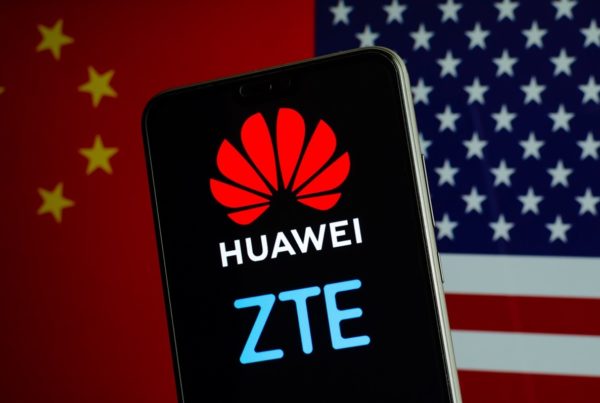Italy has a medium-high likelihood of achieving broad-band connectivity goals set by European Gigabit Society 2025 and Digital Decade 2030 plans. This is what emerges from the European Commission’s evaluation report which reviews the status of national plans on ultra-fast connectivity. Our country ranks roughly in the middle among EU countries, and it is perfectly in agreement with other members states whose chance of reaching the target of “Access to 1Gbps download/upload” for schools, transportation hubs, main providers of advertising services and companies” is medium-high. Greece, Belgium, Austria and Germany are more likely to achieving EU target; However, Italy’s good positioning should not overshadow the efforts it must undergo to achieve the other targets set by the EU: this is true for achieving the target of “accessing fast download – 100 mbps – with the change to upgrade to 1Gbps for households” a target, like the previous one, that falls under the Gigabit Society 2025 plan and which the European Commission recognizes as “more problematic” for many member states. Six countries only (Hungary, Latvia, Luxembourg, Malta, Portugal, and Romania) have a “high probability” of success in the field.
 Italian connectivity plan and its status
Italian connectivity plan and its status
As stated by the European Commission, the Italian broadband strategy defines the necessary measures to be implemented to achieve the goals for Gigabit Society and Digital Decade digital transformation; more specifically, the strategy involves seven areas:
- White areas plan;
- Voucher plan;
- Italia Giga 1 plan;
- 5G plan;
- Digital schools plan;
- Digital healthcare facilities plan;
- Islands plan.
The first two represent the continuation of the previous Next Generation Access Network Strategy (Italian strategy for broad band) while the remaining five plans were approved by the Italian government in 2021 and financed with NRRP resources equal to 6.7 billion euros. The implementation of the broadband plan is underway, but it has some delays. Despite the implementation of national regulations to reduce costs, the EU Commission identifies “difficulties while accessing current infrastructures and challenges in getting right permissions.” Among the main parameters identified by EU, we can find NGA coverage which, in 2022, reached 97% satisfactory level. The fixed VHCN coverage corresponds to 53.7% and, over the last two years, it’s been increasing of 20%.
Despite these positive and promising results, they are still well far from reaching EU average which stands at 73.4%. Over the last 20 years, FTTP coverage has significantly increased standing at 53.71% reaching EU average. According to EU Commission there is also the change of reaching the target of “Access to 1Gbps download/upload” for all schools, transportation hubs, main providers of advertising services and companies” by next year.
Critical aspects of Italian plan
For Bruxelles, however, there are still some challenges to be faced: according to the Commission, Italy should be more committed to improving VHCN networks’ coverage and ease administrative procedures, cooperation among bodies and the placement for broad band infrastructures. Furthermore, as stated in the report, there still exists a considerable gap between coverage in urban and rural areas. Only 26% of rural areas are covered by fixed VHCN. Administrative and coordination procedures concerning the placement of broad band infrastructures are very complex and hard to implement.
Another challenge could be represented by the high level of digital literacy of Italian citizens. According to the Commission: “even if broadband prices are lower than those in other EU countries, the low level of people’s digital knowledge and expertise (46%) and a lower use of Internet compared to EU average (83%) might impact the demand of digital change.” Furthermore, Italy must confront itself with the penalizing geographic landscapes related to the hard accessibility to some mountainous areas, both in the Apennines and the Alps. This factor strongly influences its chance of reaching the target of “Access to 100 Mbps speed upgradeable to 1 Gbps for all households” by next year. This target is less likely to be reached unless wider-scope actions are properly taken.
 The delays of the Italian 1 Giga plan and the Government’s measures
The delays of the Italian 1 Giga plan and the Government’s measures
To address the many delays in the Italian plan, the government recently introduced an amendment, approved by Parliament last April, to save one of the mayor projects of the National Recovery and Resilience Plan, the “Italia a 1 Giga” tender for the extension of ultra-broadband coverage. More specifically, this regulation aims to safeguard Open Fiber’s batches considering both their inability to connect lots of street numbers, which apparently don’t exist, and the inability to connect a similarly substantial number of street addresses which were not identified in the mapping.
While facing these issues, the amendment highlights “the final term for the completion of the work, the total number of street addresses to be connected, and the overall investments” assumed by the contractors, without any obligations on public finances. The tender amounts to a total value of 3.45 billion euros of which 1.8 pertains to Open Fiber’s lots, with a deadline set for June 30 2026. The amendment does not exclude the possibility that one or two of Open Fiber’s most delayed lots might be sold to Tim-Fibercop. Tim and Fibercop, the Group’s infrastructure company, are handling the implementation of the 7 lots they were awarded with in the frame of Italia 1 Giga Plan, for a total value of 1.6 billion euros plus 700 million euros in direct investment. The main goal is making sure that connection speeds of at least 1 Gigabit/s for downloads and 200 Megabits/s for uploads is reached by the end of 2026, through the deployment of fiber optics in the access network. The Plan is thought for a total of 10 regions (Piedmont, Aosta Valley, Liguria, Abruzzo, Molise, Sardinia, Umbria, Marche, Calabria, and Basilicata) plus Trento and Bolzano.
 EU plan
EU plan
Beyond Italian critical scenario, Brussels highlights how many other EU countries planning on implementing connectivity plans are going through some hard times. If Europe wants to keep up with other countries, they will have to boost the spread of broadband technologies. According to the European Commission, coverage with gigabit networks and the use of internet services are crucial for European economic development and competitiveness, as well as for social cohesion within the Union. “Many countries,” notes Brussels, “will struggle to achieve the connectivity targets.” Nonetheless, the Commission has identified other factors which might positively impact on the implementation, such as the strong demand for ultra-fast broadband: a positive factor that will increase both internet coverage and its use.” The Commission goes on stating that many countries are working hard to “implement and strengthen VHCN and FTTs markets in rural areas: a commitment which is being realized both resorting to State’s support and through cooperation and cross sectoral demand.”
While acknowledging that the connectivity targets set by European programs are ambitious and that, to date, many member states “are well positioned to achieve them,” some goals appear to present greater challenges. The hardest scenario concerns the connectivity target which, by next year, should provide countries with downloadable speed of 100 Mbps, upgradable to 1 Gbps, for all households. As of today, the most part of countries are struggling to reach this target. Even though lots of investments are focused on networks, there are still some member states relying on technologies for which is not sure that 100Mbps connectivity can be upgraded to 1 Gbps thus providing users with more innovative and reliable services. Concerning 5G target (meaning a continuous coverage of 5G wireless broadband for all urban areas, major roads, and railways), the scenario is relatively positive. As stated in the report: “The commercial launch of 5G is in full swing and there is optimism about basic 5G connectivity.”
Despite these promising data, the development, and the use of 5G autonomous technology are progressing more slowly than expected, and some member states might struggle cope with continuous service over major roads and railways. In order to reach the connectivity target, set by the 2023 digital decade agenda, EU countries will have to face lots of challenges which will require a significant support from individual states, which in turn, will need to upgrade their infrastructures as quickly as possible to make sure the European Union maintains adequate competitiveness in the global context.
 Final thoughts
Final thoughts
As stated by the the European Commission in the report, the digital future of Europe “will heavily depend on achieving the targets set at the community level. “If the Union and its Member States incentivize the spread of these technologies, Europe’s digital infrastructure can become a competitive advantage and support Europe’s social and economic progress.” Compared to other countries, like Germany, having a wider stock of available public and private resources, Italy is well positioned to achieve EU these goals. Nonetheless, there are still some critical challenges partly linked to objective factors (such as geographic landscape) and partly due to administrative and bureaucratic aspects which can significantly delay the development of digital Italian infrastructures. Addressing these challenges is, thus, crucial. Another top priority concerns the further development of digital skills among Italian citizens: a factor which might negatively impact on the demand of digital services in several areas of our country.





